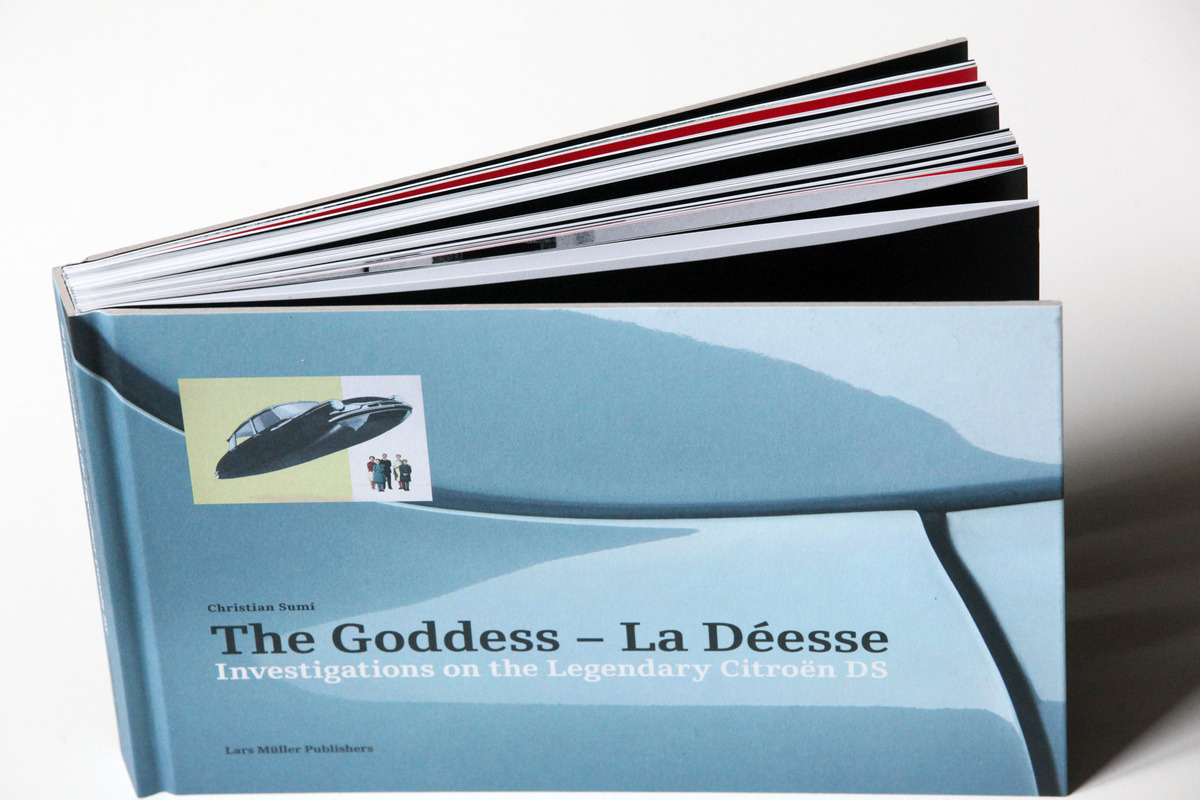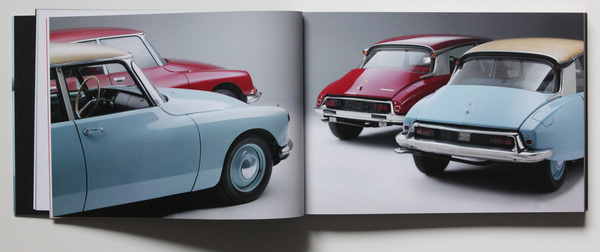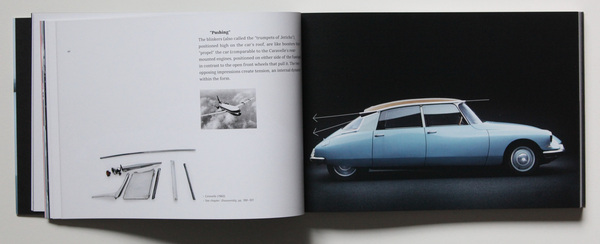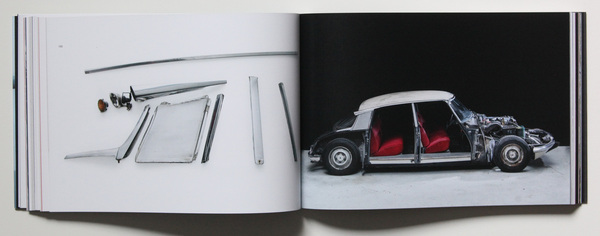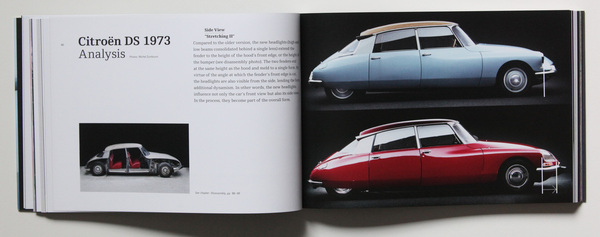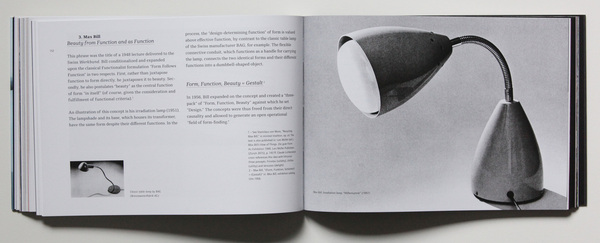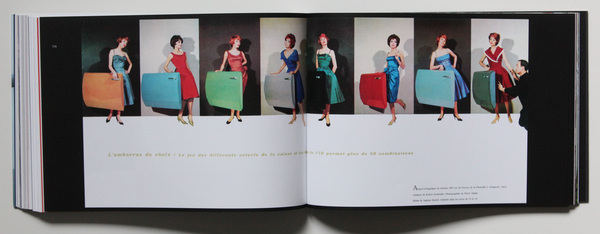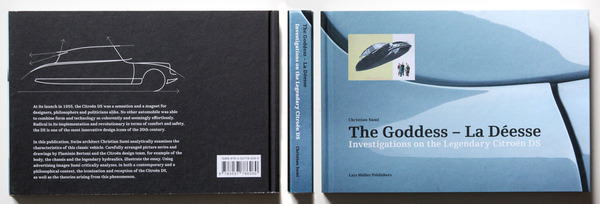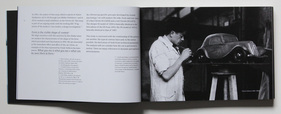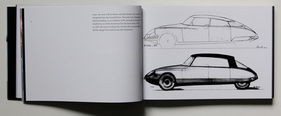Who is this Christian Sumi to give us a book about the Citroën DS that is different from the previous ones? Well, he is an architect, graduated from ETH Zurich in 1977 and has since worked as a professor at various renowned universities. He also runs an architecture firm in Zurich together with Marianne Burkhalter.

Shapes and design have always been important to Sumi, so it is perhaps less surprising that he has chosen to focus on the automobile and specifically on the Citroën "Goddess". This is not the first time he has done so, as back in 2001 he commented on the book "AS in DS" by Alison and Peter Smithson, which was about a trip through Great Britain in a Citroën DS 19.
Architects and cars
Sumi is of course not the first architect to work with cars. Another was the Italian Gio Ponti, who designed the "Diamante line" in the 1950s, a car that was developed from the user's perspective and was intended above all to be practical and sensible. The sketches, which were transformed into a 1:1 mock-up for Grand Basel 2018, may not have been visually convincing, but the user-centric design approach was way ahead of its time.

Ponti not only had his thoughts at almost the same time as Bertoni was working on the DS, he also later became a convinced DS driver himself.
Sumi is not a car manufacturer, but he is certainly interested in cars. You can tell from the bibliography that accompanies the book. However, Sumi is not someone who collects test reports and recites technical data; he is interested in the design and creation of a car.
The car as art or as a functional object
Although Sumi does not forget the technology in his 232-page book, which is printed slightly larger than A5 landscape, and even devotes a chapter to hydropneumatics, he is primarily concerned with the shape and design of the Citroën. Accordingly, Flaminio Bertoni and Robert Opron, who were responsible for the design of the original DS and the swivel-eye update of 1968, are clearly more important to him than people like André Lefèbre, Paul Magés or Walter Becchia, who were influential technicians who helped make the DS possible. At least they appear briefly in the appendix.

The main part of the book is devoted to the design development of the DS model. The ingenuity of the design is described with design drawings, plans and, above all, beautifully executed comparative photographs of an ID 19 from 1959 and a DS 23 from 1973.
18 pages are devoted to the decomposition of a Citroën DS 21, which is literally photographically stripped down to its skeleton.

A further 50 pages are dedicated to Bertoni/Opron's critics and competitors, so to speak. Renowned designers such as Raymond Loewy are included here as well as the Swiss artist and intellectual Max Bill and his "form, function, beauty = shape" approach.

Critic Otl Aicher also has his say, who saw the DS as an aerodynamic step backwards, while at the same time making suboptimal use of space.
A book as a total work of art?
This Citroën book is not a typical car book, as evidenced by the fact that it received a review in/on "Wallpaper". And you can also see it in the book's graphically interesting design. It's not so easy to describe, so take a look at the particularly rich examples in the gallery accompanying this review.
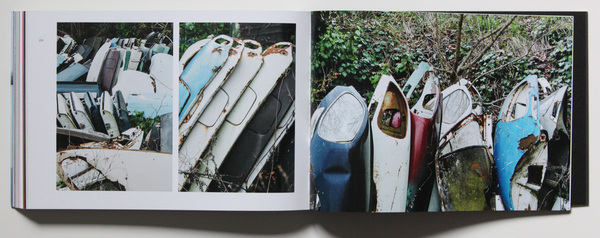
It is also fitting that Christian Sumi spent some time in a car graveyard between Nîmes and Alès photographing decaying DS models. These photos now appear on the last 16 pages and they show us the transience of even a design of the century. Funnily enough, the photos also show a BX, a late descendant of the DS in Bertone's design language.

This book, written entirely in English, is certainly an interesting work, but you have to get involved with the thoughts and claims of Sumi and co to enjoy and appreciate it. If you are simply looking for a work on the history of the Citroën ID/DS, want to find out about the number of units or technical components or are looking for advice on restoration/repair problems, Sumi is certainly not the right person for you. But these topics have already been and are being dealt with elsewhere.

However, anyone interested in design and creation, up to and including the associated communication and advertising, will find many suggestions and insights in this book that put the price of EUR 35 or CHF 40 in the right light.
Bibliographical information
- Title: The Goddess - La Déesse - Investigations on the Legendary Citroën DS
- Author: Christian Sumi
- Language: English
- Publisher: Lars Müller Publishers
- Edition: 1st edition, August 2020
- Format: Hardcover, 24 x 16.5 cm
- Scope: 202 pages, 198 illustrations (photos, plans and drawings)
- ISBN: 978-3-03778-626-0
- Price: EUR 35 / CHF 40 (approx.)
- Buy/order: Online at amazon.de, online at Lars Müller Publishers or in relevant bookstores
